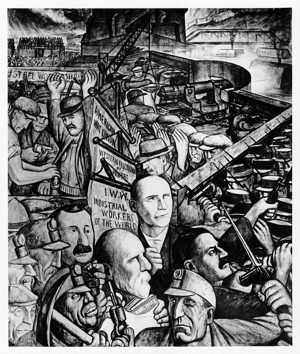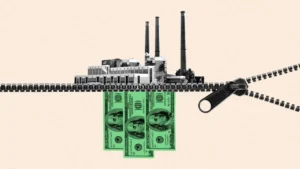What’s Germany’s Secret?
In the decades immediately following World War II, U.S. wages steadily rose in step with productivity at a time when one-third of American workers belonged to labor unions. Today, union membership stands at 7% and wages are in decline, and conservatives are saying the two aren't connected. (more)
In the decades immediately following World War II, U.S. wages steadily rose in step with productivity at a time when one-third of American workers belonged to labor unions. Today, union membership stands at 7% and wages are in decline, and conservatives are saying the two aren’t connected.
They claim the great prosperity that middle- and working-class Americans enjoyed in the mid-20th century was attributable not to the strength of unions, but to the fact that the United States’ greatest competitors were crippled by the aftermath of war, Robert Reich reports. But a glance at Germany’s recent economic history, with an unemployment rate of only 6% and productivity on the rise, suggests otherwise. –ARK
Your support matters…Robert Reich:
What’s Germany’s secret? In sharp contrast to the decades of stagnant wages in America, real average hourly pay has risen almost 30 percent there since 1985. Germany has been investing substantially in education and infrastructure.
How did German workers do it? A big part of the story is German labor unions are still powerful enough to insist that German workers get their fair share of the economy’s gains.
That’s why pay at the top in Germany hasn’t risen any faster than pay in the middle. As David Leonhardt reported in the New York Times recently, the top 1 percent of German households earns about 11 percent of all income – a percent that hasn’t changed in four decades.
Independent journalism is under threat and overshadowed by heavily funded mainstream media.
You can help level the playing field. Become a member.
Your tax-deductible contribution keeps us digging beneath the headlines to give you thought-provoking, investigative reporting and analysis that unearths what's really happening- without compromise.
Give today to support our courageous, independent journalists.






You need to be a supporter to comment.
There are currently no responses to this article.
Be the first to respond.